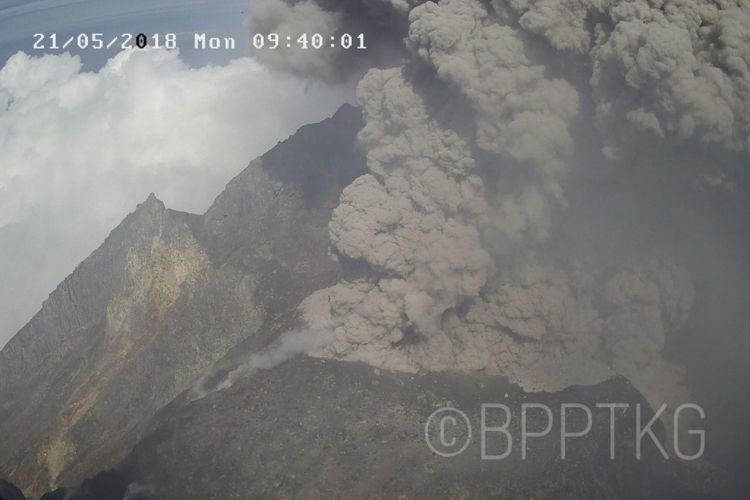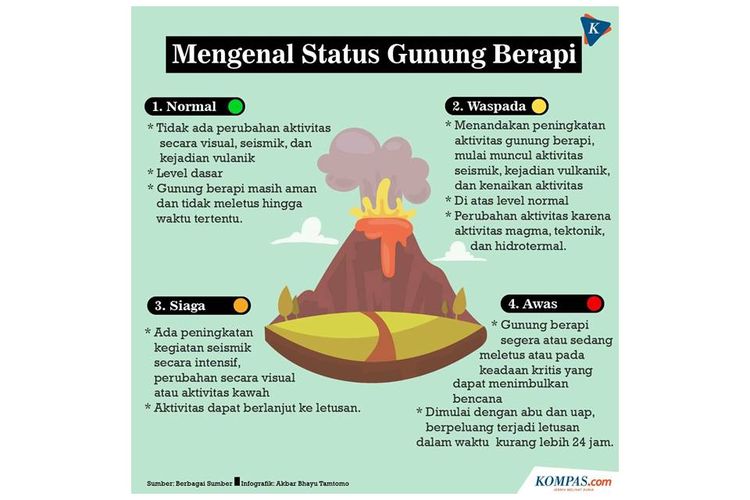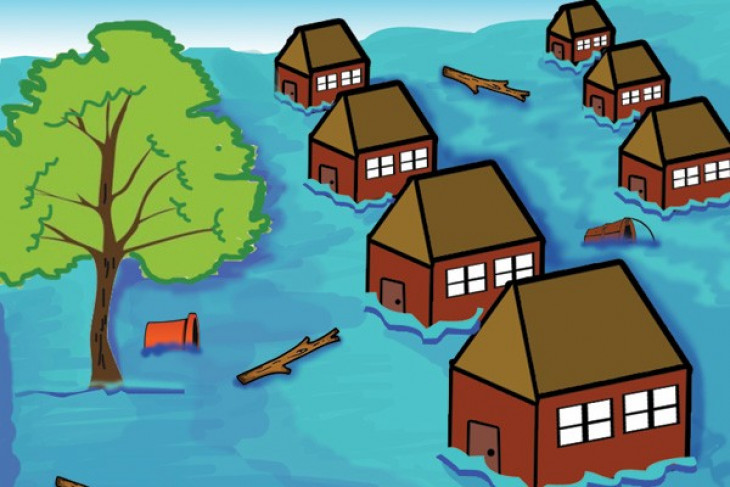
KOMPAS.com - Dalam dua minggu belakangan, gunung Merapi sangat aktif. Hari Rabu (25/6/2018) hingga pukul 14.16 WIB saja, Merapi sudah mengalami dua letusan freatik.
Menurut Balai Penyelidikan dan Pengembangan Teknologi Kebencanaan Geologi (BPPTKG), letusan pertama terjadi pukul 3.31 WIB selama 4 menit dengan ketinggian kolom 2.000 meter ke arah barat daya.
Letusan kedua terjadi pada 13.49 WIB dengan durasi dua menit, namun ketinggian kolom abu tidak teramati dari Pos PGM Babadan.
"Status Merapi masih pada tingkat waspada (Level II). Penduduk yang tinggal dan beraktivitas di luar radius 3 KM dapat terdampak abu letusan, namun tidak membahayakan jiwa." kata Hanik Humaida, Kepala BPPTK.
"Masyarakat yang beraktivitas di luar ruangan diharap menggunakan masker dan meningkatkan kesiapsiagaan," imbuhnya.
Ahli vulkanologi, Surono, mengungkapkan bahwa rangkaian letusan freatik Merapi kali ini bisa dimaknai sebagai dampak perubahan karakteristiknya.
Sebelumnya, Merapi selalu meletus dengan periode 2-4 tahun sekali. Setiap letusan selalu disertai dengan pembentukan kubah lava.
Namun sejak Oktober 2010, Merapi berubah. Siostemnya jadi terbuka sehingga mempengaruhi karakteristik letusannya.
Surono mengatakan, perubahan karakter itu punya dampak positif dan negatif. Dampak positifnya, Merapi tak langsung menghasilkan awan panas saat pertama kali meletus.
Sementara itu, dampak negatifnya semua sinyal yang diberikan Merapi sangat lemah. Sinyal yang dimaksud antara lain gempa tidak atraktif, deformasi, dan lain sebagainya.
"Saya bilang, hati-hati dengan sistem terbuka. Gejalanya tidak bisa lagi memakai kamus zaman dulu," ungkapnya.
 Status gunung berapi
Status gunung berapiMeskipun demikian, Surono mengingatkan, "Semua proses alam tidak mungkin tanpa tanda-tanda. Hanya saja tanda-tandanya kecil, karena freatik tidak sebesar magmatik," paparnya.
Menurut pengamatan Surono, masyarakat di sekitar lereng Merapi adalah masyarakat yang paling siap menghadapi letusan gunung berapi. Tidak hanya di Indonesia, tetapi juga di dunia.
"Saya terus terang saja, sebelum terjadi letusan saya ngobrol dengan kepala SAR DIY. Mereka mengambil langkah menggelar pasukan dengan atau tanpa waspada lho. Itu tindakan yang sangat luar biasa," katanya.
"Jadi menurut saya, masyarakat dan aparat sudah siap. Sekarang kuncinya adalah BPPTKG memberikan informasi secara cepat, tepat, dan akurat," tegasnya.
sumber: Kompas.com dengan judul "Letusan Freatik Buktikan Merapi Telah Berubah, Apa Dampak Negatifnya?





 JAKARTA - Letak dan kondisi geografis Indonesia menyebabkan negara ini terbilang rawan bencana alam. Hal ini diakui dapat memengaruhi stabilitas ekonomi Indonesia.
JAKARTA - Letak dan kondisi geografis Indonesia menyebabkan negara ini terbilang rawan bencana alam. Hal ini diakui dapat memengaruhi stabilitas ekonomi Indonesia.